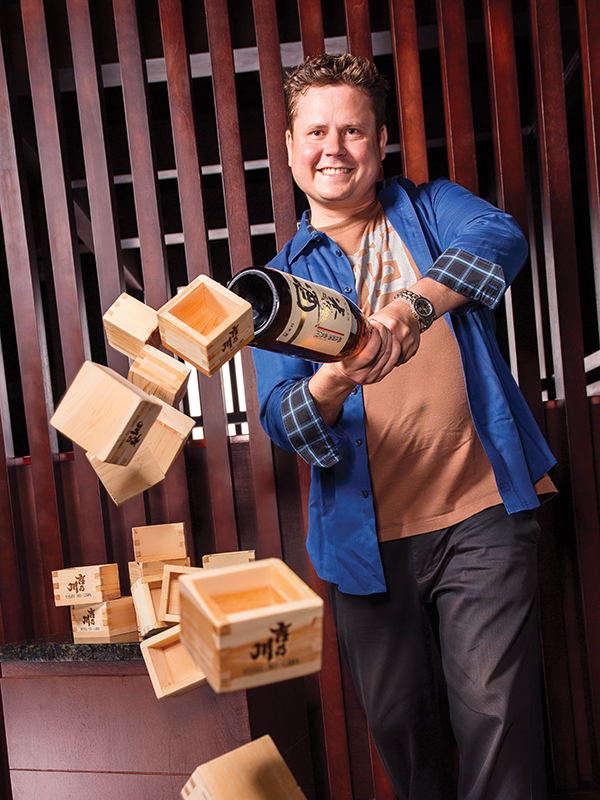Who: Chris Maybroda
Age:40
Job: Certified Sake Specialist
Experience:It may only have four ingredients, but there’s a lot to know about sake. In fact, there are only about a dozen certified sake experts in Canada. Chris Maybroda is one of them. Maybroda, who has worked in the spirits industry for nearly 20 years, took the official sake certification course in 2010 in Portland. A former Vancouver resident, a year ago he moved to Edmonton – a market that, until recently, had very little knowledge of sake, says Maybroda. “I realized very quickly that there was an opportunity to be the sake missionary, as it were, to be the ambassador of sake in northern Alberta and bring it to people.”
Pronounced “sak-eh,” this traditional Japanese alcoholic beverage has been around for centuries. Like wine or beer, there is cheap sake and the more premium versions of the drink. Maybroda promotes the good stuff through an agency, called Blue Note Wine & Spirits, the first company to import premium sake into Canada.
“Sake, like most things that are Japanese, is beautiful in its simplicity. It is, quite literally, just four things – rice, yeast, water and a starter mould called koji. That’s what makes it the purest alcoholic beverage out there. For people with gluten intolerances or people with sulfite issues, this is a perfectly pure beverage – provided they’re drinking the premium stuff.
“In all of its simplicity as a beverage, it’s incredibly complex to make properly. There is the milling of the rice and there’s a huge factor in how long you soak the rice and steam the rice. It is brewed, so it is closer to beer than not, but it is not brewed like beer. It’s actually brewed with a process that’s called multiple parallel fermentation. There are a number of different processes going on at the same time, which makes it very unique.
“The word junmai on a label means that there is no additional alcohol added to the sake. If you don’t see the word “junmai” [on a label] , it means they have added a bit of brewer’s alcohol to the sake. That doesn’t mean that the alcohol content of the sake is higher; it just basically means that the toji, the brewmaster, added a little bit of brewer’s alcohol to bring out specific characteristics in that sake that may not come out had they not added that little bit of alcohol.
